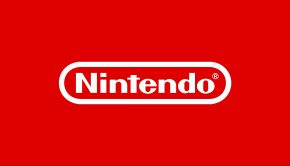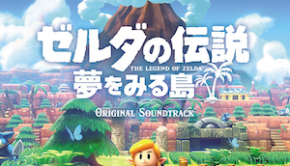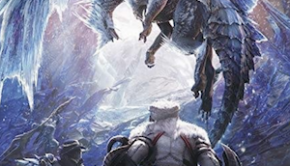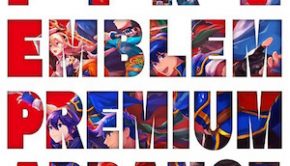Breath of Fire II
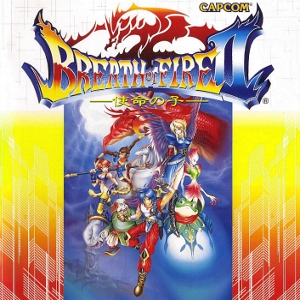 |
Album Title: Breath of Fire II |
| Record Label: Sony Records |
|
| Catalog No.: SRCL-3119 |
|
| Release Date: January 21, 1995 |
|
| Purchase: Buy Used Copy |
Overview
The Super Nintendo’s Breath of Fire II continued Capcom’s dragon saga in 1994 to largely impressive results. Of all the scores in the series, Breath of Fire II‘s has the most noticeable continuity with its predecessor. Among the similarities include the focus on orchestral elements, the use of RPG staples, and the employment of similar synth samples. However, the ensemble team who scored the original Breath of Fire were replaced by a single composer, Yuko Takehara. While a talented composer, not all her contributions to this score are a clear progression from the predecessor. The initial soundtrack release for the game was incomplete, featuring one disc of music, though Capcom eventually resolved this by releasing a complete box set. The original version nevertheless features most of the major compositions and is of potentially some merit…
Body
As evidenced from the opening themes, Breath of Fire II continues the epic orchestral focus of the series. Yet whereas Breath of Fire featured elaborate gothic-tinged orchestrations, the treatment of the orchestra is often plain and straightforward here, if still effective. With its relentless chords and thunderous percussion, “The Destined Child”, for instance, makes a massive impact despite its brevity and unoriginality. Other tracks such as “Coliseum”, “Century of the Patriarch”, and even the staff roll “Thank You, Everyone” also feature loud top-heavy orchestration that is highly striking in the game, but are a little obnoxious outside it. In general, Takehara’s approach sometimes feels a little lazy and unartistic compared with that offered by Yamaguchi on the previous score. However, it’s not an absolute regression, since the music works almost flawlessly within the game.
That said, Yuko Takehara had an above-average command of orchestration for a game music composer back in the day and some of her works are especially reflective of this. “Kingdom”, for instance, is a classically-oriented town theme with period phrasing and chamber orchestration. The most remarkable feature of this composition is the way it develops from a frivolous A section towards a much deeper B section, culminating in some striking fanfare figures at the 0:31 mark. “Clumsy Dance” is also far more intricate than the context demanded and could have sufficed perfectly fine as a short bouncy ditty; the fact that Takehara took the time to score a wistful development section makes the track worthwhile out of context, though. Other tracks that go way beyond the call of duty include “We’re Ranger” with its delightful flute trills, “Let Me Sleep…” with its dreamy harp work, and “Left Unspoken” with its electric piano contemplations.
The most disappointing aspect of the entire Breath of Fire II score are its action themes. Given the rest of the soundtrack is dominated by traditional orchestral music, the rock stylings of these thankfully few themes provides quite an awkward contrast. “Cross Counter” packs a lot into its short playtime, entering a number of contrasting sections; however, none of these sections are strong enough for a normal battle theme and some of the treble synth sounds quite gimmicky. “I’ll Do It” is one of the better implemented rock tracks on the Super Nintendo and has a real thrust, but unfortunately is let down by its fairly repetitive riff-based composition. “Lethal Dose” is a better fit for the score with its orchestral stylings, but is surprisingly low-key for a final battle theme, transitioning between slow-building brooding section and more urgent ones, without ever really sounding climactic.
Finally, it should be noted that there are occasionally moments in the score that reference the themes and styles of the original Breath of Fire. “God of Decadence” is the closest the soundtrack comes to emulating the gothic style Yamaguchi built up on the previous score. This is an invention featuring interweaving choral and pipe organ writing. The composition is among the more authentic-sounding Baroque imitations on the Super Nintendo and the synthesis of both elements is also highly impressive. Following the gorgeous “The Closing of the Dragon’s Eye at the End of the Tale”, there is also a delightful arrangement of “Starting the Journey” in the penultimate track “Breath of Fire”, featuring more intricate countermelodies and enhanced synth. It would have been a worthy main theme for the series had it not been dropped in subsequent scores.
Summary
Breath of Fire II does often resemble a vanilla orchestral RPG score, especially when sandwiched between its gothic predecessor and jazzy successor. However, it’s extremely evident during the course of the soundtrack that Takehara is capable of producing ambitious and elaborate compositions too. It’s just a pity that a lot of the remaining material is quite superficial and lazy — albeit sufficient in context — perhaps due to demanding schedules. However, there is enough gold offered here to make the soundtrack still worth purchasing, especially after playing the game. The one disc release, while incomplete, features most of the important pieces from the game and less of the filler. However, completists may prefer to purchase the box set version instead, where the full two disc soundtrack is featured alongside four other great scores.
Do you agree with the review and score? Let us know in the comments below!
3
Posted on August 27, 2010 by Chris Greening. Last modified on May 26, 2014.

